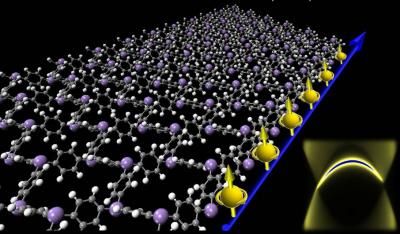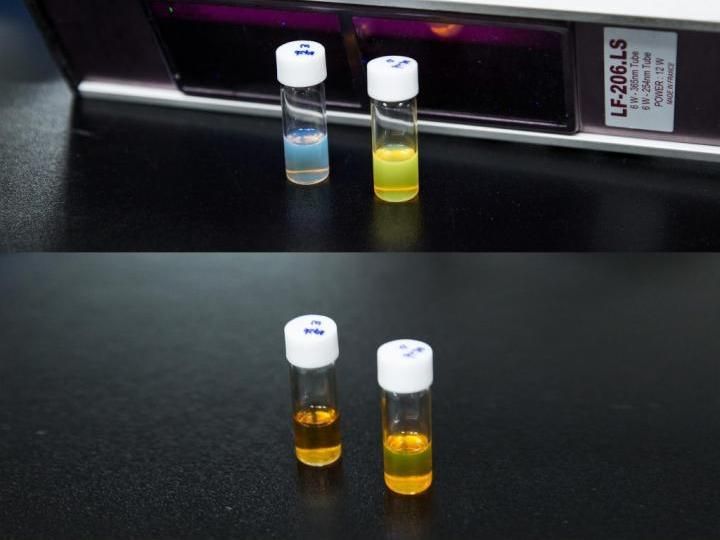Striding towards a new dawn for electronics
Conductive polymers are plastic materials with high electrical conductivity that promise to revolutionize a wide range of products including TV displays, solar cells, and biomedical sensors. A team of McGill University researchers have now reported how to visualize and study the process of energy transport along one single conductive polymer molecule at a time, a key step towards bringing these exciting new applications to market. “We may easily study energy transport in a cable as thick as a hair, but imagine studying this process in a single polymer molecule, whose thickness is one-millionth of that!” said Dr. Gonzalo Cosa of McGill’s Department of chemistry, lead researcher.
Working in collaboration with Dr. Isabelle Rouiller of McGill’s Department of Anatomy and Cell Biology, the team used state-of-the-art optical and electron microscopes and were able to entrap the polymer molecules into vesicles – tiny sacs smaller than a human body cell. The researchers visualized their ability to transport energy in various conformations.
“This research is novel because we are able to look at energy transport in individual polymer molecules rather than obtaining measurements arising from a collection of billions of them. It’s like looking at the characteristics of a single person rather than having to rely on census data for the entire world population,” Cosa explains. Conductive polymers are long organic molecules typically referred to as nanowires. Components along the polymer backbone successfully pass energy between each other when the polymer is collapsed (coiled within itself), but the process is slowed down when the polymer backbone is extended. A greater understanding of how this process works will enable us to develop a range of technologies in the future.”
The studies are critical to applications in daily life such as sensors involving the detection and the differentiation of cells, pathogens, and toxins. They may also help in the future to develop hybrid organic-inorganic light harvesting materials for solar cells.
Other news from the department science
These products might interest you
Most read news
More news from our other portals
See the theme worlds for related content
Topic world Sensor technology
Sensor technology has revolutionized the chemical industry by providing accurate, timely and reliable data across a wide range of processes. From monitoring critical parameters in production lines to early detection of potential malfunctions or hazards, sensors are the silent sentinels that ensure quality, efficiency and safety.

Topic world Sensor technology
Sensor technology has revolutionized the chemical industry by providing accurate, timely and reliable data across a wide range of processes. From monitoring critical parameters in production lines to early detection of potential malfunctions or hazards, sensors are the silent sentinels that ensure quality, efficiency and safety.






























































